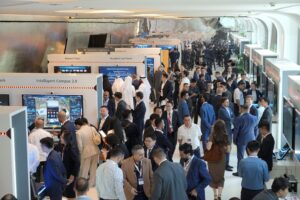Mobile World Congress (MWC) Barcelona 2020 has been canceled due to the coronavirus outbreak but today, Huawei held its global Industrial Digital Transformation Conference. It was held via live streaming connecting guests from across the world including the UK, Switzerland, USA, Germany, and Italy with the theme “Hi, Intelligent World”. The conference previewed five trends of an intelligent world 10 years’ from now and proposed a foundation built on new types of connectivity, computing, platform, and ecosystem. This will enable the intelligent development of a wide variety of industries, including urban development, manufacturing, energy, finance, transportation, and so on. The ASEAN Economic Community, Shenzhen Airport Group, and other customers also shared their insights and experiences in digital transformation.
In the future, information flows with new ICT, such as 5G, AI, and IoT will help us build the foundation from which everything originates. Simply put, the world of 2030 will be intelligent. Standing at the start of a new decade, Huawei believes the intelligent world 2030 will have five features:
1) at a governmental level, people-oriented digital governments will be built to adapt to people’s livelihoods better;
2) at an economic level, intelligent robots will make up a critical part of a future labor force;
3) at a social level, digital technology will help equalize the sharing and proper distribution of education, healthcare, and other public resources, achieving digital equality;
4) from a cultural point of view, citizens will be freed from heavy physical labor and tedious repetitive work, and their focus will naturally shift from material value to mental value; and
5) from an environmental point of view, the deployment of various digital technologies, we help us monitor and control carbon emissions more effectively and, as a result, help protect the earth.
 Ma Yue, Vice President of Huawei Enterprise Business Group, commented: “The next decade will witness the rapid development of new ICT. Huawei believes new types of connectivity, computing, platform, and ecosystem will build a solid foundation for the intelligent world of 2030. Ultra-broadband and high-speed networking built using 5G, Wi-Fi 6, and quantum communications will bridge the physical and digital worlds, laying a foundation for the intelligent world.”
Ma Yue, Vice President of Huawei Enterprise Business Group, commented: “The next decade will witness the rapid development of new ICT. Huawei believes new types of connectivity, computing, platform, and ecosystem will build a solid foundation for the intelligent world of 2030. Ultra-broadband and high-speed networking built using 5G, Wi-Fi 6, and quantum communications will bridge the physical and digital worlds, laying a foundation for the intelligent world.”
Mr. Ma continued: “New computing will offer a full-stack, all-scenario solution that covers bottom-layer chips, all the way to upper-layer algorithms, spanning consumers to business and which constitutes the core of intelligent transformation. The converged, shared, and digital platform features high efficiency and openness, enabling customers to focus on their own unique advantages and service innovation, therefore playing a key role in enabling the digital transformation of industries. Based on enterprise business Strategy, Architecture, Policy, and Operations (SAPO), the new ecosystem that provides a single field of expertise allied to multiple skills and is deeply integrated, can offer more comprehensive customer-oriented business solutions.”
The intelligent world of 2030 cannot exist without the digital transformation of industries across the spectrum. Huawei has accumulated extensive experience in helping industries such as government, transportation, finance, and electric power achieve digital transformation for the present and the future, through new connectivity, computing, platform, and ecosystem. Currently, more than 700 cities worldwide and 228 of the Fortune Global 500 companies, including 58 of the Fortune Global 100 companies, have selected Huawei as their partner for digital transformation.
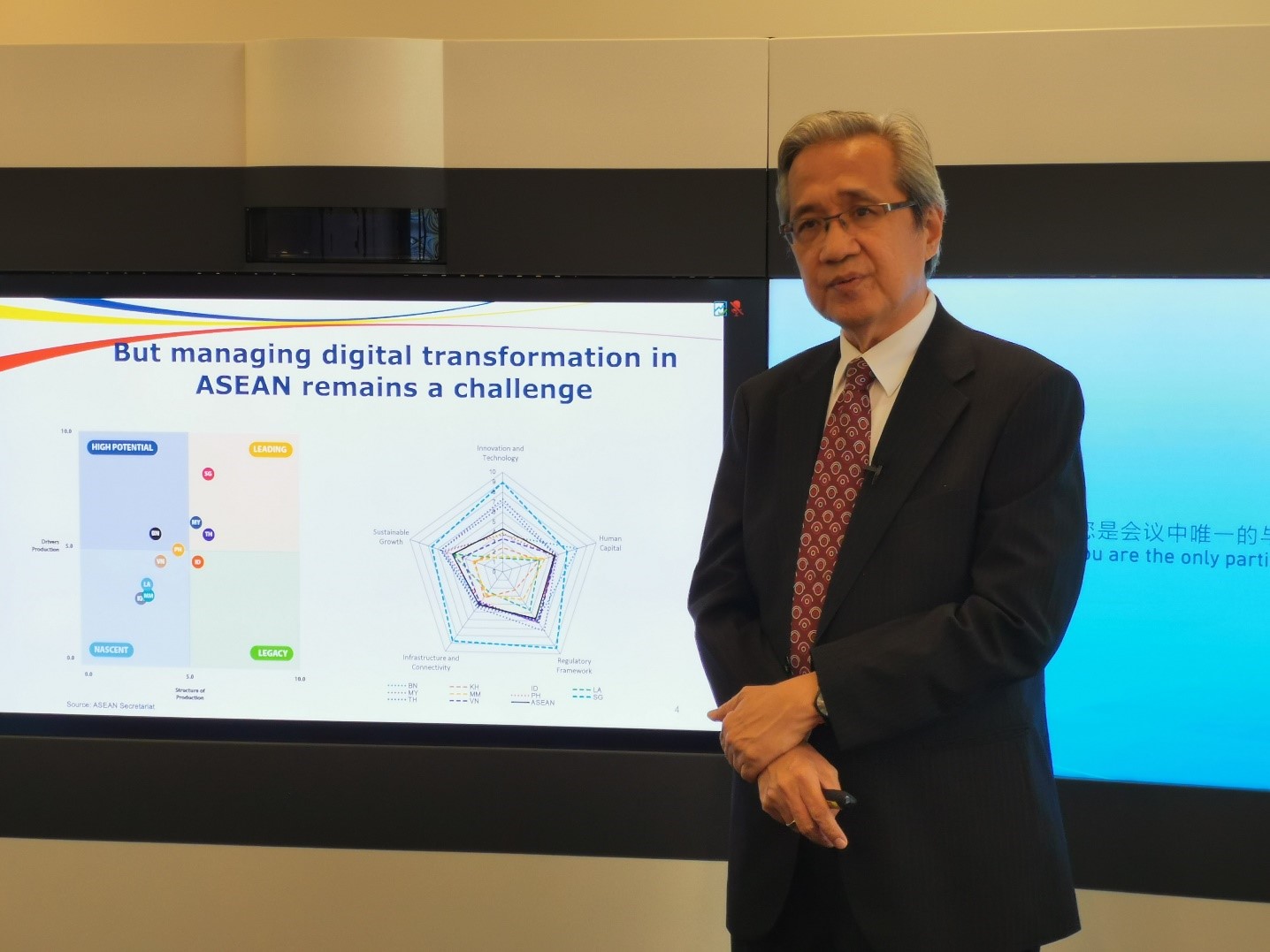 Dr. Aladdin D. Rillo, Deputy Secretary-General for ASEAN Economic Community commented: “ASEAN’s digital economy soared to USD 100 billion for first time in 2019, and is expected to grow to over USD 300 billion by 2025. For governments, businesses, and society, a digital transformation is no longer an option but an imperative path to empower the economy and businesses. To further promote digital transformation in ASEAN, new initiatives are currently being pursued such as the development of the 5G ecosystem, framework on international mobile roaming, smart manufacturing, and an ASEAN innovation network. But to be successful, we also need the support of the private sector and market players like Huawei particularly in building an innovation-friendly ecosystem and addressing issues related to the big idea and data privacy.”
Dr. Aladdin D. Rillo, Deputy Secretary-General for ASEAN Economic Community commented: “ASEAN’s digital economy soared to USD 100 billion for first time in 2019, and is expected to grow to over USD 300 billion by 2025. For governments, businesses, and society, a digital transformation is no longer an option but an imperative path to empower the economy and businesses. To further promote digital transformation in ASEAN, new initiatives are currently being pursued such as the development of the 5G ecosystem, framework on international mobile roaming, smart manufacturing, and an ASEAN innovation network. But to be successful, we also need the support of the private sector and market players like Huawei particularly in building an innovation-friendly ecosystem and addressing issues related to the big idea and data privacy.”
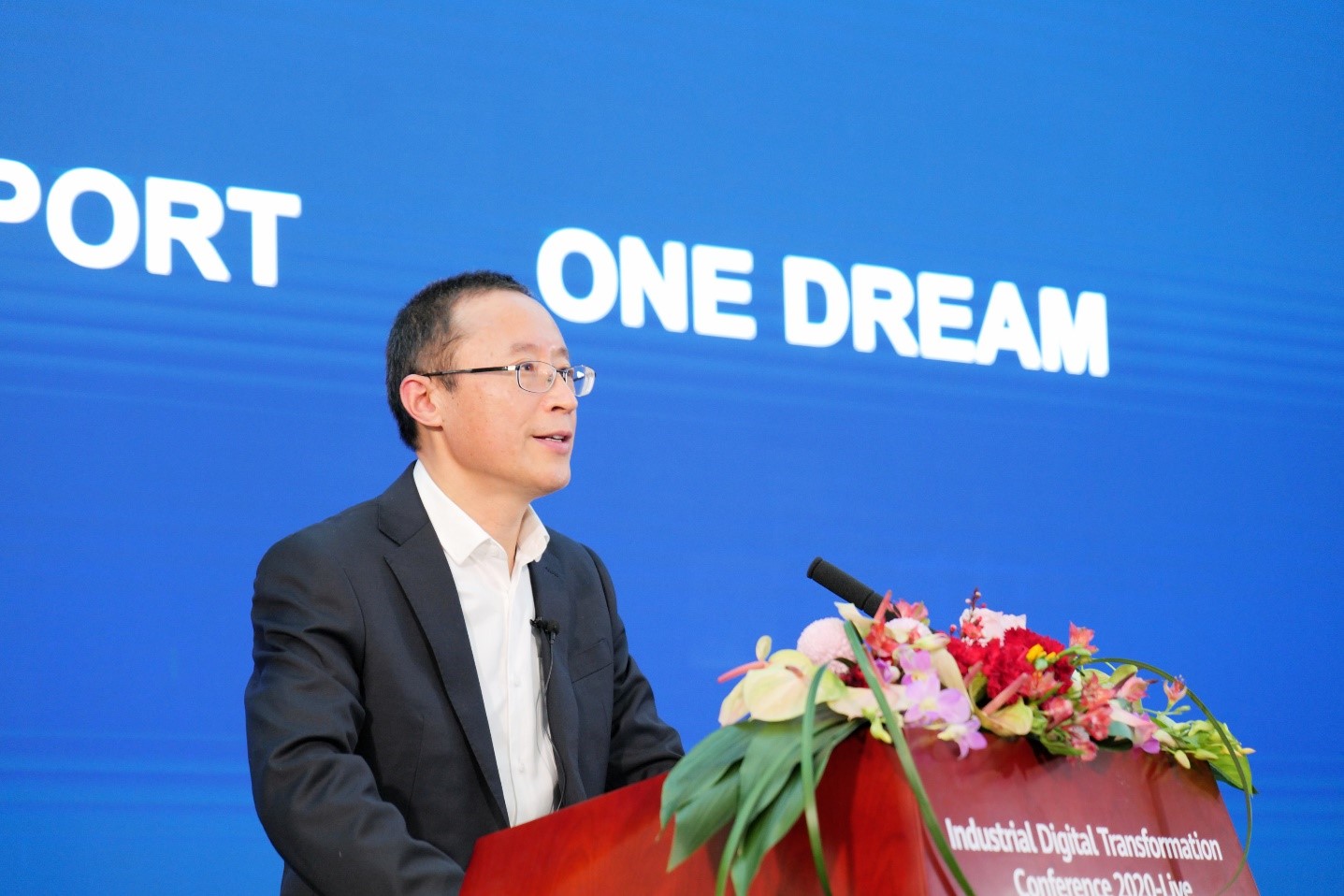 Zhang Lixuan, GM of Digitalization, Shenzhen Airport Group (SAG), talked about how the group delivered digital transformation and constructed a smart airport. The digital transformation of an airport is a complex project but with its vision of “One Airport, One Dream”, SAG created a systematic approach to building a fully-digital airport with outstanding user experience. The Group selected Huawei as its strategic partner for digital transformation, using the Huawei Horizon Digital Platform with cloud-network synergy.
Zhang Lixuan, GM of Digitalization, Shenzhen Airport Group (SAG), talked about how the group delivered digital transformation and constructed a smart airport. The digital transformation of an airport is a complex project but with its vision of “One Airport, One Dream”, SAG created a systematic approach to building a fully-digital airport with outstanding user experience. The Group selected Huawei as its strategic partner for digital transformation, using the Huawei Horizon Digital Platform with cloud-network synergy.
The platform integrated six ICT resources – IoT, big data, AI, video cloud, GIS, and ICP – to construct four comprehensive service systems: security, operations control, services, and management. The single-view of airport operations has had significant benefits, including increasing flight punctuality to 87%, and intelligent stand allocation that can complete within seconds, reducing the number of shuttle bus passengers by 4 million annually. This makes Shenzhen Airport become the world’s first organization to publish cases on the New Experience in Travel and Technologies (NEXTT) platform. From a security point of view, the new system provides more accurate and intelligent control over terminal areas, airfields, public areas, and cargo areas. The facial recognition solution improves security check efficiency by 60%, reduces the risk of passengers’ loss of ID card by taking it out for checking, and meets the differentiated requirements of business passengers.
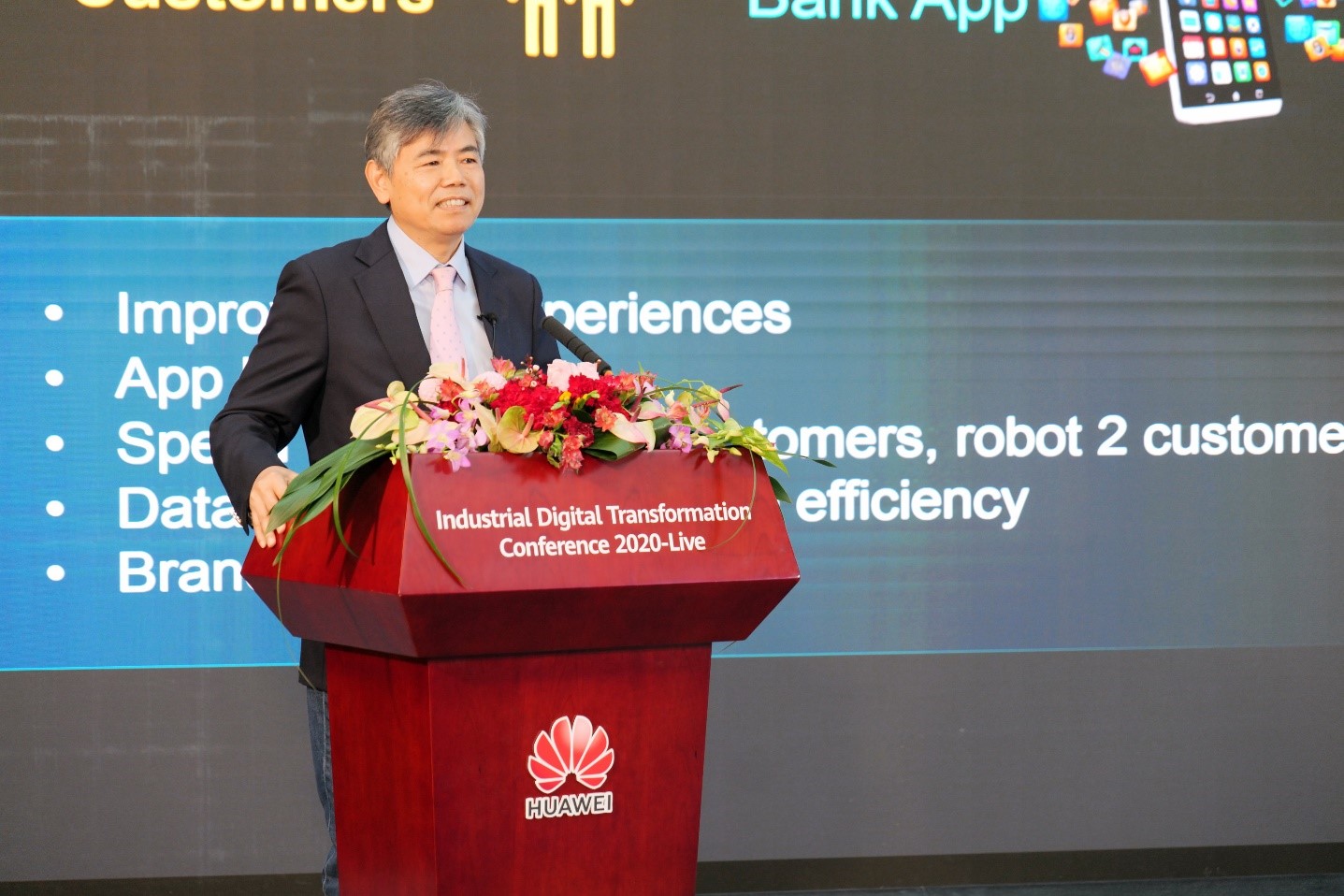 Chen Kunte, former Chief Information Officer of China Merchants Bank and currently Chief Digital Transformation Officer of Global Financial Services in Huawei’s Enterprise Business Group, commented on the huge changes in the Chinese banking industry. In the future, the ‘app’ will become an ecosystem that integrates retail and corporate customers, and serve as a technology platform to bring banking services into the digital world. The traditional concept of banks’ digital transformation was only as a technology transformation for replacing core application systems. However, he believes that real digital transformation is a process of integrating IT and business teams and that rapid, step-by-step deployment, fast iteration, and technology agility will drive business agility.
Chen Kunte, former Chief Information Officer of China Merchants Bank and currently Chief Digital Transformation Officer of Global Financial Services in Huawei’s Enterprise Business Group, commented on the huge changes in the Chinese banking industry. In the future, the ‘app’ will become an ecosystem that integrates retail and corporate customers, and serve as a technology platform to bring banking services into the digital world. The traditional concept of banks’ digital transformation was only as a technology transformation for replacing core application systems. However, he believes that real digital transformation is a process of integrating IT and business teams and that rapid, step-by-step deployment, fast iteration, and technology agility will drive business agility.
In the future, 5G will drive significant improvements in app capabilities that will help bring banking services into the digital world, helping branches and account managers regain engage with retail and corporate customers much more regularly. He cited China Merchants Bank as an example. The bank established a private cloud and mobile platform, and opened host functions to manage devices and users, and control mobile network security. It also built a big data platform with decoupled architecture and applied AI and machine learning to the entire business chain to enhance credit risk control. Furthermore, it deployed a financial transaction cloud and moved applications from the host to the cloud, enhancing customer experience and supporting continuous service innovation.
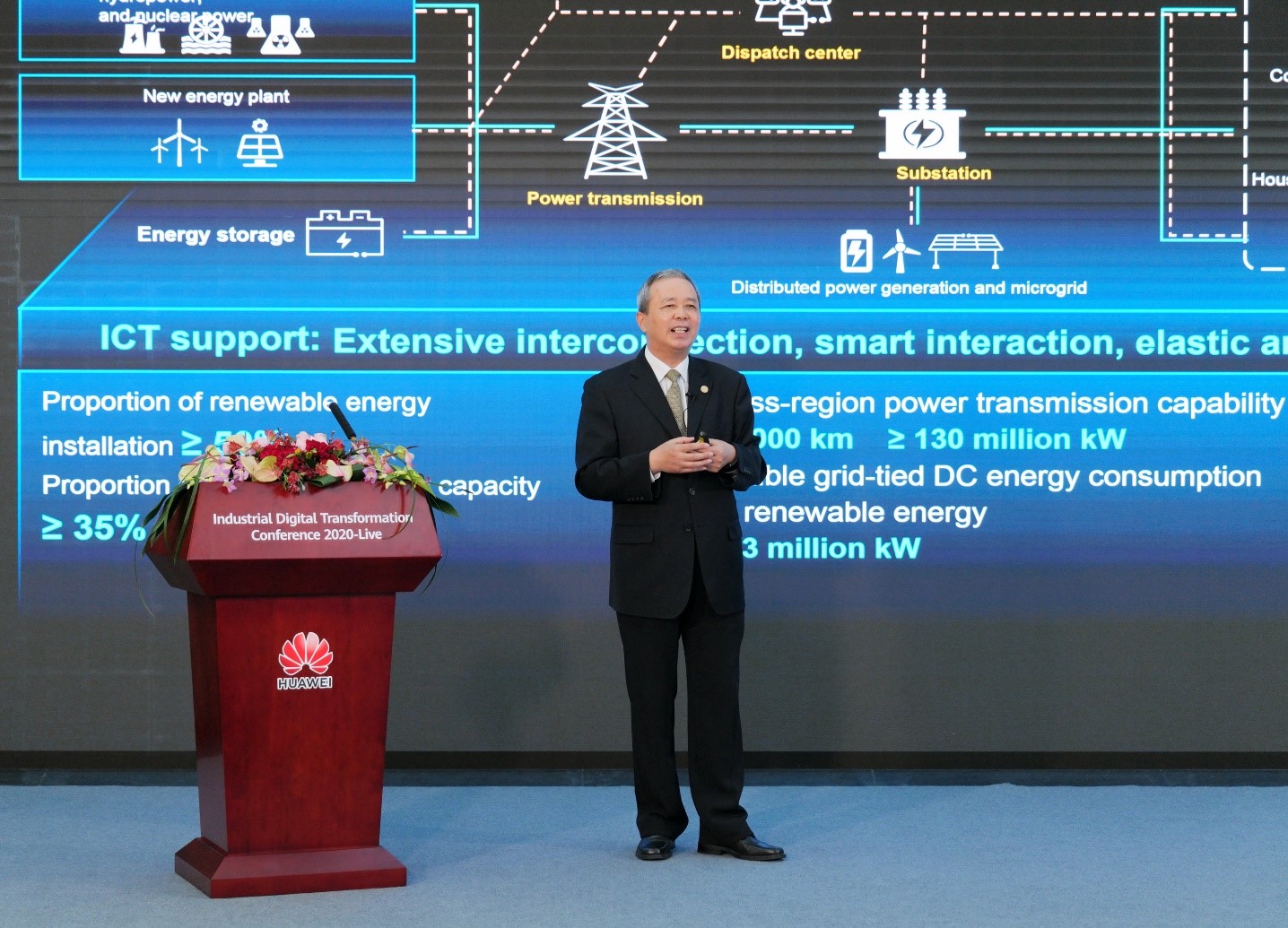 Liu Jianming, Director of the Expert Committee on “Smart Grid Technology and Equipment”, Industry Development Promotion Center, the Ministry of Industry and Information Technology (MIIT) of China, believes that future power systems will integrate digital technology extensively with traditional power. As digital technologies usage continues to expand in the electric power field, future power systems will evolve toward “universal connectivity, intelligent interaction, high flexibility, and solid security and control.”
Liu Jianming, Director of the Expert Committee on “Smart Grid Technology and Equipment”, Industry Development Promotion Center, the Ministry of Industry and Information Technology (MIIT) of China, believes that future power systems will integrate digital technology extensively with traditional power. As digital technologies usage continues to expand in the electric power field, future power systems will evolve toward “universal connectivity, intelligent interaction, high flexibility, and solid security and control.”
In his speech, Director Liu introduced several cases of digital transformation practices in China’s electric power industry. In 2019, the Qinhai Green Energy Cloud Network Control Platform and Big Data Center supported the Qinhai Province of China for 15 consecutive days using 100% clean energy. When applied to power transmission and distribution services, AI technology improved inspection efficiency and increased the intelligent ability of equipment identification operations by 90%. ICT is now supporting the daily operations of the public charging infrastructure, serving more than 500,000 electric vehicles in China with a goal of 6.18 million by the end of the year.
Recently, the coronavirus outbreak has attracted global attention. The Zhejiang, Jiangsu, and Sichuan subsidiaries of the State Grid Corporation of China (SGCC) analyzed the power index of enterprise resumptions based on big data from the electricity grid. This has helped provide local government authorities with an overview of the resumption of local enterprise production.
We are honored to participate in this astonishing era of intelligent development. Huawei Enterprise Group’s “Platform + AI + Ecosystem” strategy focuses on cooperation with ecosystem partners, governments and enterprises to build a solid foundation for the intelligent world with new types of connectivity, computing, platform, and ecosystem, and together delivering the promise of the intelligent era.




